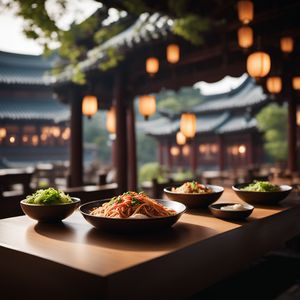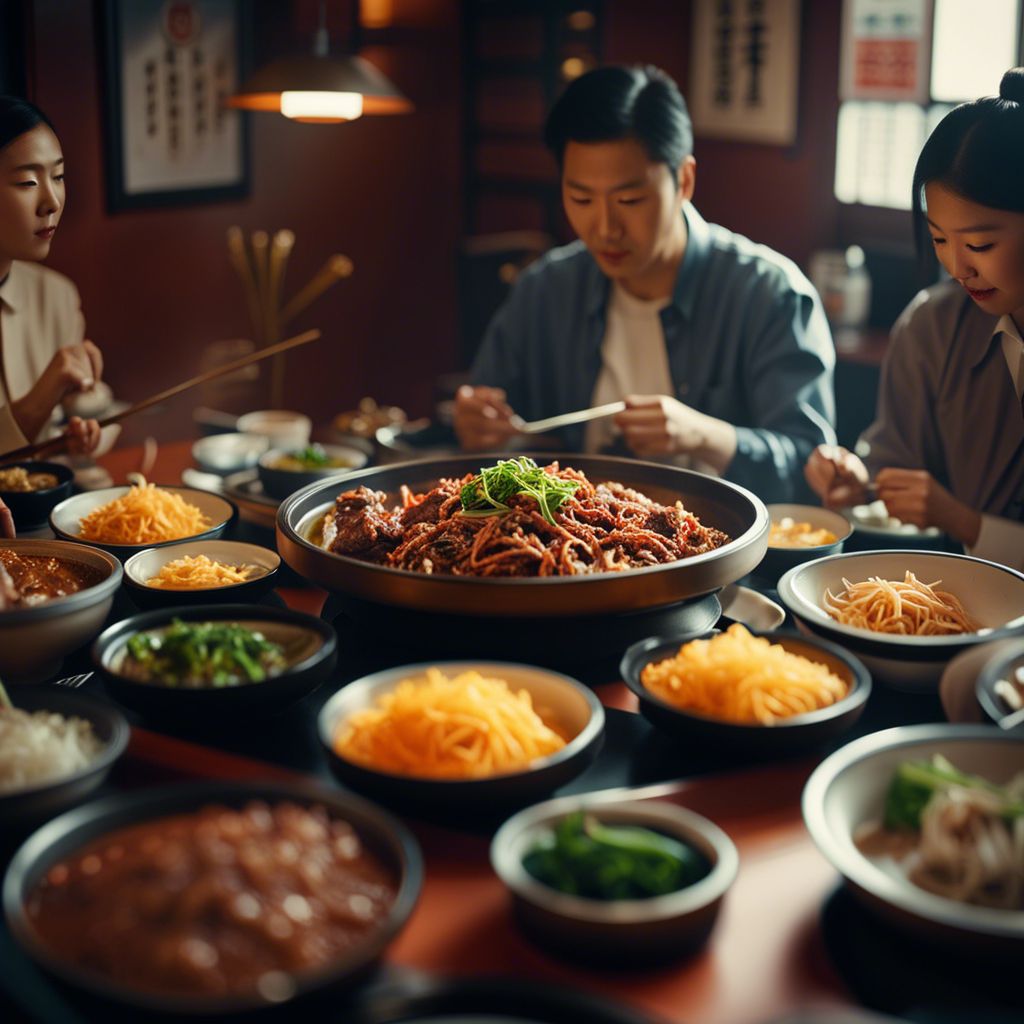
Dish
Bulgogi
The beef in bulgogi is typically marinated in a mixture of soy sauce, sugar, sesame oil, garlic, and other seasonings. The beef is then grilled or stir-fried and served with rice and vegetables. The dish is believed to have originated in the Goguryeo era, which was from 37 BC to 668 AD.
Origins and history
Bulgogi is a Korean dish that originated in the Goguryeo era, which was from 37 BC to 668 AD. It can be made with different types of meat such as chicken or pork. It can also be made with different types of vegetables such as mushrooms or onions.
Dietary considerations
Bulgogi is not suitable for vegetarians or vegans as it contains meat. It is also not suitable for those who are gluten intolerant as soy sauce is a common ingredient in the marinade.
Variations
There are many variations of bulgogi, including dak bulgogi (made with chicken), dwaeji bulgogi (made with pork), and neobiani (made with thinly sliced beef).
Presentation and garnishing
Bulgogi is typically served on a platter with the beef in the center and the vegetables and rice around the edges. The dish can be garnished with sesame seeds or sliced green onions.
Tips & Tricks
To make the dish healthier, lean cuts of beef can be used and the amount of sugar in the marinade can be reduced.
Side-dishes
Bulgogi is often served with rice and vegetables such as lettuce, carrots, and cucumbers. Kimchi, a spicy fermented vegetable dish, is also a common side dish.
Drink pairings
Bulgogi pairs well with Korean rice wine, known as makgeolli, or with a light beer such as Hite or Cass.
Delicious Bulgogi recipes Browse all »
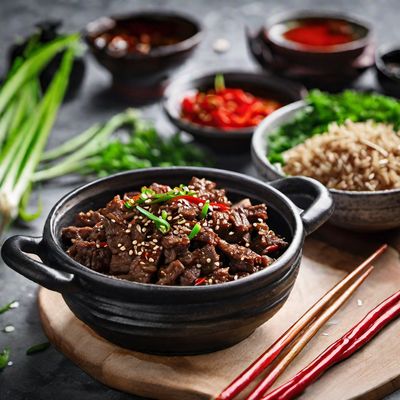
Sichuan-style Spicy Bulgogi
Fiery Sichuan Bulgogi: A Spicy Twist on a Korean Classic
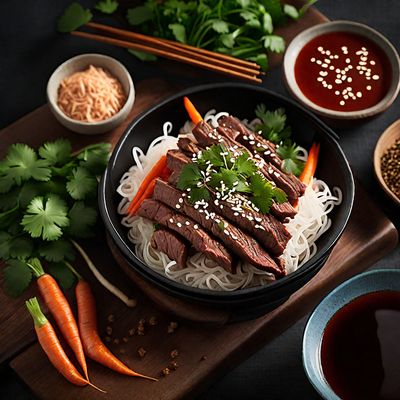
Vietnamese-style Bulgogi
Banh Mi Bulgogi: A Vietnamese Twist on a Korean Classic

Thai-style Bulgogi
Thai-inspired Grilled Beef with Spicy Marinade

Bulgogi - Russian Style
Savory Russian Bulgogi: A Fusion of Korean and Russian Flavors
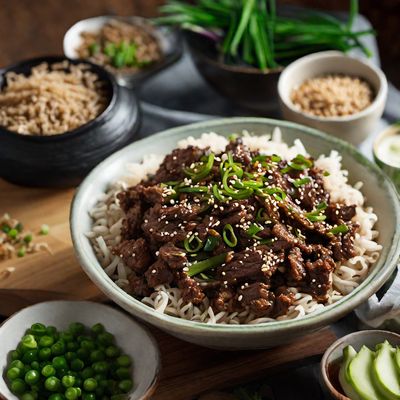
Bulgogi
Soulful Bulgogi: A Korean Classic with a Southern Twist

Arab-Style Bulgogi
Middle Eastern Twist: Arab-Style Bulgogi with a Spicy Harissa Marinade

Taiwanese-style Bulgogi
Taiwanese Spicy Beef Stir-fry

Haute Bulgogi
Elevated Korean Beef Stir-Fry

Bulgogi - Korean Grilled Beef
Sizzling Beef Delight: A Latvian Twist on Korean Bulgogi

Greek Bulgogi
Greek-Style Marinated Beef
More dishes from this category... Browse all »

Alambre
Mexican cuisine

Anticucho
Peruvian cuisine

Apanado de alpaca
Peruvian cuisine

Avar khinkal
Georgian cuisine

Bandeja paisa
Colombian cuisine

Banska kapama
Bulgarian cuisine

Barbecue Ribs
American cuisine

Bauernschmaus
Austrian cuisine

